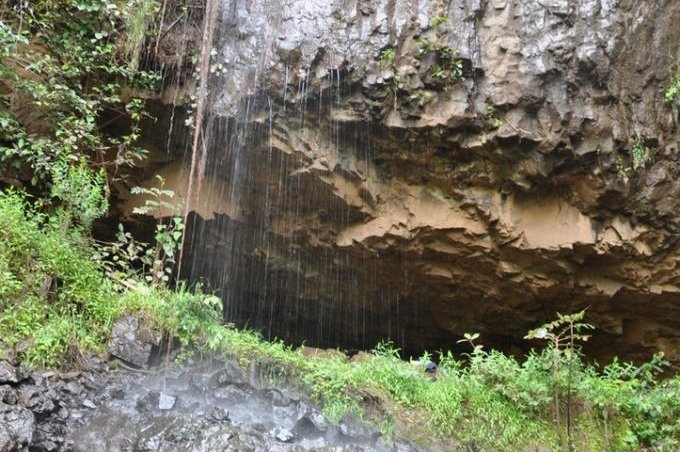The newly sequenced genome was sampled from the skull of an ancient human found in the Mota cave in the Ethiopian highlands. Photo by Kathryn and John Arthur/Cambridge
CAMBRIDGE, England, Oct. 8 (UPI) -- For the first time, scientists have sequenced an ancient human genome recovered from Africa. The results suggests a mass migration from Eurasia back to Africa, roughly 3,000 years ago, was more significant than previously thought.
The genome was recovered from the skull of a man, buried 4,500 years ago in a cave called Mota in the Ethiopian highlands. It's the first full genome recovered from Africa.
Scientist at the University of Cambridge found the sequenced genome to be quite different from the genome of modern Africans. These differences, scientists say, are the result of what's known as the "Eurasian backflow."
Some 3,000 years ago, a significant number of farmers from the Near East and Anatolia migrated back into the Horn of Africa -- the same people who had brought farming to Eurasia, 4,000 years prior.
By comparing the ancient genome to sequences of modern Africans, researchers revealed the significance of the ancient migration event. New DNA arriving with the backflow likely accounts for as much as 25 percent of the genome of modern East Africans. Across the continent, as far as South and West Africa, migration DNA accounts for at least 5 percent of the modern genome.
The new analysis was published this week in the journal Science.
"Roughly speaking, the wave of West Eurasian migration back into the Horn of Africa could have been as much as 30 percent of the population that already lived there -- and that, to me, is mind-blowing," senior study author Andrea Manica, a professor and researcher with Cambridge's zoology department, said in a press release.
"The question is: what got them moving all of a sudden?" Manica added. Neither he nor his colleagues have an answer to that question.
The regions from where this ancient migration originated have changed drastically -- in terms of genetics -- over the last 3,000 years. But Manica and his colleagues say present day Sardinians, residents of the remote Italian island, are most genetically similar to the ancient farmers of the Near East.
"The famers found their way to Sardinia and created a bit of a time capsule. Sardinian ancestry is closest to the ancient Near East," said Eppie Jones, a geneticist at Trinity College Dublin who assisted the sequencing work.
Until recently, anthropologists have looked mostly to northern and arctic regions for DNA fragments sizable enough to sequence. Scientists believed falsely that heat corrupted and degraded human DNA. But while it's true that microbes can quickly taint degrading genetic material, new research suggests usable DNA can still be found in warmer climates.
Scientists have found the bone surrounding the inner ear is a reliable source of genetic coding, even when other parts of the fossil have been robbed of their genetic signatures.
That's not to say finding and sequencing an ancient genome is easier -- but new possibilities are opening up all the time.
"It's hard to get your hands on remains that have been suitably preserved," explained co-author Ron Pinhasi, an expert in genetic sequencing at University College Dublin. "The denser the bone, the more likely you are to find DNA that's been protected from degradation, so teeth are often used, but we found an even better bone -- the petrous."
"The sequencing of ancient genomes is still so new, and it's changing the way we reconstruct human origins," added Manica. "These new techniques will keep evolving, enabling us to gain an ever-clearer understanding of who our earliest ancestors were."















